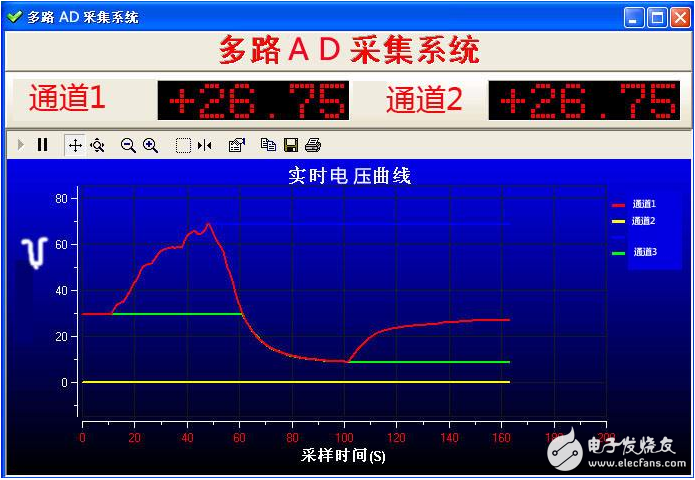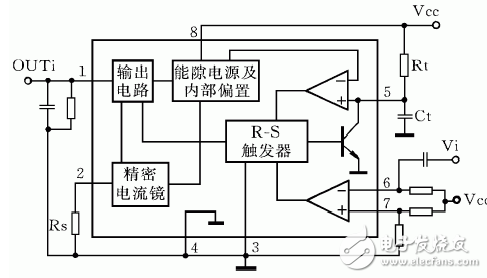AD conversion is analog to digital conversion. As the name implies, it is to convert an analog signal into a digital signal. It mainly includes integral type, successive approximation type, parallel comparison type/serial parallel type, Σ-Δ modulation type, capacitor array successive comparison type and voltage frequency conversion type.
The A/D converter is used to convert analog quantities into digital quantities through a certain circuit. The analog quantity can be an electrical signal such as voltage or current, or a non-electrical signal such as pressure, temperature, humidity, displacement, and sound. However, before the A/D conversion, the input signal input to the A/D converter must be converted into a voltage signal by various sensors through various sensors.
principle
After A/D conversion, the output digital signal can have 8 bits, 10 bits, 12 bits, 14 bits, and 16 bits. The working principle of the A/D converter mainly introduces the following three methods: successive approximation method, double integration method, voltage frequency conversion method, A/D conversion, four steps: sampling, holding, quantization, and encoding.

AD conversion classification
1) integral type (such as TLC7135)
The integral type AD works by converting the input voltage into time (pulse width signal) or frequency (pulse frequency), and then the digital value is obtained by the timer/counter. The advantage is that high resolution can be achieved with a simple circuit, but the disadvantage is that since the conversion accuracy depends on the integration time, the conversion rate is extremely low. Most of the initial single-chip AD converters used integral type, and now the successive comparison type has gradually become the mainstream.
2) successive comparison type (such as TLC0831)
The successive comparison type AD is constituted by a comparator and a DA converter by successive comparison logics, starting from the MSB, sequentially comparing the input voltage to the output of the built-in DA converter for each bit, and outputting the digital value after n comparisons. Its circuit scale is medium. The advantages are higher speed, lower power consumption, lower price at low resolution (12-bit), but high price at high precision (12 bits).
3) Parallel comparison type / string parallel comparison type (such as TLC5510)
Parallel comparison type AD uses multiple comparators to perform conversion only for one comparison, also known as FLash (fast) type. Since the conversion rate is extremely high, the n-bit conversion requires 2n-1 comparators, so the circuit scale is also extremely large and the price is high, and it is only suitable for a particularly high speed field such as a video AD converter.
The serial-parallel comparison type AD structure is between the parallel type and the successive comparison type. The most typical one is composed of two n/2-bit parallel type AD converters combined with the DA converter, and the conversion is performed by two comparisons, so It is a Half flash type. There is also a three-step or multi-step AD conversion called MulTIstep/Subrangling type AD, and from the conversion timing angle, it can also be called Pipelined type AD, and the modern hierarchical AD also adds multiple times. The conversion result is numerically operated to correct features and the like. This type of AD speed is higher than the successive comparison type, and the circuit scale is smaller than the parallel type.
4) Σ-Δ (Sigma?/FONT) delta modulation type (such as AD7705)
The Σ-Δ type AD is composed of an integrator, a comparator, a 1-bit DA converter, a digital filter, and the like. In principle, it approximates the integral type, converting the input voltage into a time (pulse width) signal, and processing it with a digital filter to obtain a digital value. The digital portion of the circuit is basically easy to singulate, so it is easy to achieve high resolution. Mainly used for audio and measurement.
5) Capacitor array successive comparison type
The capacitor array successive comparison type AD uses a capacitance matrix method in the built-in DA converter, and can also be called a charge redistribution type. In most resistor array DA converters, the values ​​of most resistors must be the same, and it is not easy to generate high-precision resistors on a single chip. If a capacitor array is used in place of the resistor array, a high-precision single-chip AD converter can be fabricated at a low cost. The most recent successive comparison type AD converters are mostly capacitor array type.
6) Frequency-frequency conversion type (such as AD650)
The Voltage-Frequency Converter implements analog-to-digital conversion by indirect conversion. The principle is to first convert the input analog signal into a frequency, and then use a counter to convert the frequency into a digital quantity. In theory, the resolution of this AD can be increased almost infinitely, as long as the sampling time can meet the width of the cumulative number of pulses required by the output frequency resolution. The advantages are high resolution, low power consumption, and low price, but an external counting circuit is required to complete the AD conversion.

The reference voltage is like this. If your choice of reference voltage is 5v and your ad is 12-bit, then when your input voltage is 5v, your MCU display should be 4095. If it is 0v input, then the MCU. The value inside is 0, the value of the intermediate point is linear, that is, if your input is m, the value of the single-chip microcomputer is 4096*m/5, which in turn you know the value of the microcontroller and can calculate your input. How much is it!
There is also an inductor between the signal ground and the analog ground to remove interference, just like using a capacitor between vcc and GND.
The reference voltage for ad conversion is the standard voltage of the internal T-line network. The reference voltage can be considered as your highest upper limit voltage (not exceeding the power supply voltage). When the signal voltage is low, the reference voltage can be lowered to improve the resolution. After changing the reference voltage, the same binary voltage value will be different. The largest binary (all 1) indicates your reference voltage. When calculating the actual voltage, you need to take the reference voltage into account. The stability of the reference voltage has a large impact on your system performance.
Wireless-Wifi Repeater,Wifi Extender,Wifi Range Extender,Best Wifi Extender
Shenzhen Jinziming Electronic Technology Co.,LTD , https://www.powerchargerusb.com